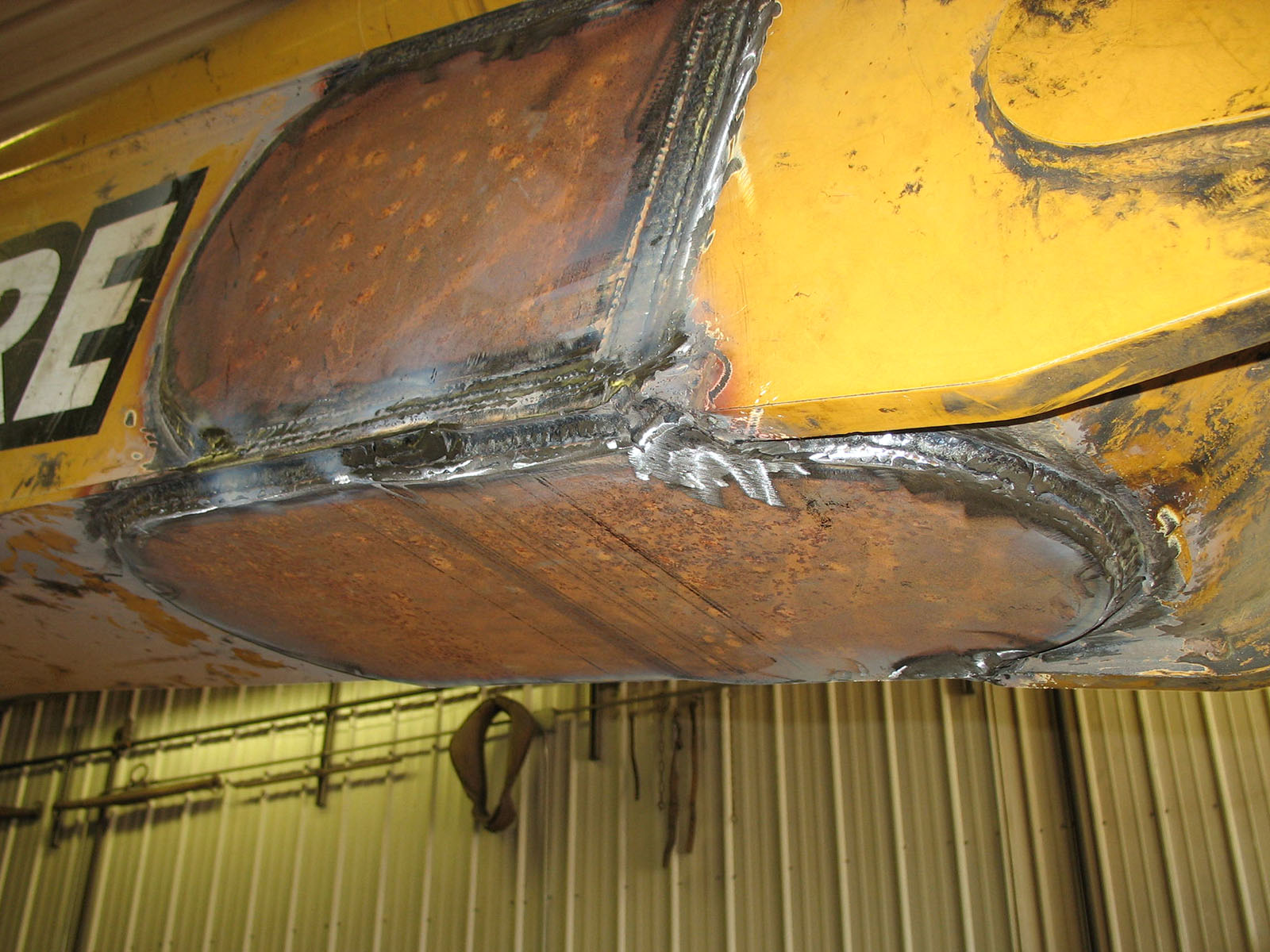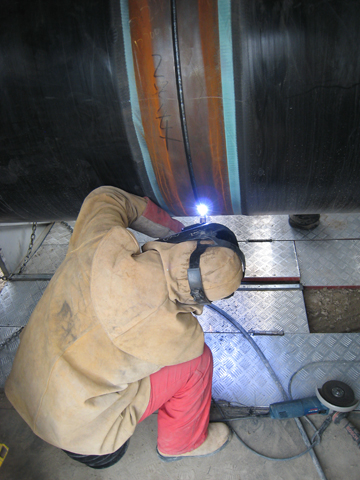Usual Welding Repair Service Issues and Exactly How to Address Them Efficiently
Welding repair services typically encounter a variety of problems that can jeopardize the stability of the last product. Usual problems consist of inadequate penetration, porosity, and misalignment, amongst others. Each defect offers distinct challenges that call for particular strategies for resolution. Comprehending these concerns is important for welders aiming to improve their outcomes and skills. This discussion will certainly check out these common welding repair service issues and effective methods to address them.
Inadequate Infiltration
Inadequate penetration happens when the weld steel fails to completely fuse with the base material, resulting in weak joints and possible structural failures. This problem usually originates from not enough heat input, incorrect electrode angle, or inappropriate welding speed. Welders may experience insufficient infiltration as a result of a miscalculation of the essential criteria for a particular product density or type. In addition, contamination on the base material's surface area can hinder effective bonding, aggravating the problem. To deal with insufficient penetration, welders ought to assure suitable setups on their equipment and maintain a tidy work surface area. Normal evaluation of welds is suggested to recognize any type of shortages early, permitting for timely improvements and the prevention of compromised architectural stability in welded settings up.
Porosity
Porosity is a typical issue in bonded joints that shows up as little gas bubbles entraped within the weld metal. This issue can endanger the honesty of the weld, bring about minimized toughness and possible failing under stress. Belgrade. Porosity commonly occurs from contamination, dampness, or inappropriate welding methods, which allow gases to escape into the molten weld swimming pool. To address porosity, welders ought to ensure correct surface area preparation, preserve a clean functioning atmosphere, and use appropriate welding parameters. Furthermore, selecting the best filler material and securing gas can mitigate gas entrapment. Regular assessment and screening of welds can help recognize porosity early, ensuring timely rehabilitative actions are taken, consequently protecting the top quality and integrity of the bonded framework
Imbalance
Imbalance in welding can develop from different variables, including inappropriate configuration and thermal growth. Comprehending the source is vital for reliable resolution. Numerous improvement techniques are offered to realign parts and assure structural honesty.
Reasons of Misalignment
Welding misalignment often comes from a selection of underlying issues that can compromise structural stability. One primary reason is incorrect fit-up of elements before welding, which can lead to spaces and irregular surface areas. Variations in thermal expansion throughout the welding process can likewise result in distortion, specifically if the products being joined have various coefficients of growth. Additionally, insufficient fixturing and clamping may fail to hold components firmly in area, bring about motion throughout welding. Improperly kept equipment, consisting of welding makers and tools, may present variances in the weld bead, additional adding to imbalance. Operator error, stemming from not enough training or experience, can likewise play a substantial function in developing misaligned welds.

Improvement Techniques Offered
Attending to misalignment successfully calls for a mix of corrective methods customized to the details concerns handy. One usual approach is the use of fixtures or jigs to hold elements in the proper placement during welding, guaranteeing consistent alignment. Furthermore, preheating the products can help in reducing distortion and enhance fit-up. For substantial misalignment, mechanical adjustment techniques, such as using hydraulic jacks or clamps, can be employed to deal with the position prior to welding. Post-weld heat treatment may also be required to soothe tensions triggered by imbalance. Lastly, cautious examination and adjustment during the setup phase can stop imbalance concerns from becoming significant troubles, promoting a smoother welding process and boosting overall structural honesty.
Distortion
Distortion is a common difficulty in welding that can emerge from numerous factors, including uneven heating & cooling. Comprehending the reasons for distortion is vital for executing efficient avoidance techniques. Addressing this issue not just boosts structural stability however additionally enhances the general top quality of the weld.
Sources of Distortion
When subjected to the intense warm of welding, materials often undergo changes that can result in distortion. This sensation primarily develops from thermal growth and tightening throughout the welding procedure. As the weld location heats up, the material broadens; upon air conditioning, it acquires, which can produce interior stress and anxieties. Furthermore, irregular home heating throughout a work surface can worsen these stress and anxieties, leading to bending or flexing. The sort of product additionally plays a considerable duty; metals with differing thermal conductivity and coefficients of expansion might respond in different ways, causing unforeseeable distortions. Inadequate joint layout and poor fixturing can contribute to misalignment throughout welding, boosting the possibility of distortion. Comprehending these causes is essential for reliable welding fixing and avoidance techniques.
Prevention Techniques
Reliable avoidance techniques for distortion throughout welding concentrate on controlling warmth input and guaranteeing proper joint design. Maintaining a regular warm input assists to minimize thermal development and contraction, which can bring about distortion. Using strategies such as preheating the work surface can likewise decrease the temperature gradient, promoting consistent heating. Additionally, choosing ideal joint styles, such as T-joints or lap joints, can boost security and decrease stress concentrations. Applying appropriate fixturing to protect the workpieces in position additionally aids in preserving placement throughout the welding process. Lastly, staggered welding series can distribute warmth much more equally, protecting against local distortion. By applying these approaches, welders can considerably reduce the possibility of distortion and boost the overall high quality of their welds.
Fracturing
Cracking is a common issue experienced in welding repair services, typically resulting from various aspects such as inappropriate cooling rates, product option, or insufficient joint preparation. The incident of fractures can considerably jeopardize the integrity of the weld, causing prospective failings throughout procedure. To resolve this issue, welders need to initially analyze the root causes, making sure that materials are suitable and properly selected for the particular application. In addition, controlling the cooling rate during the welding procedure is vital; fast air conditioning can cause stress and anxiety and result in fracturing. Appropriate joint style and preparation also contribute to decreasing the threat. Implementing these techniques can enhance weld quality and sturdiness, eventually reducing the chance of fracturing in finished weldments.

Insufficient Combination
A significant concern in welding repair services is incomplete blend, which occurs when the weld metal does not appropriately bond with the base material or previous weld passes - Welding. This problem can bring about weaknesses in the joint, potentially endangering the integrity of the bonded structure. Aspects adding to insufficient blend include inadequate warmth input, improper welding technique, and contamination of the surfaces being joined. To address this problem properly, welders ought to ensure correct pre-weld cleaning and surface area prep work, as well as adjust their welding parameters to achieve adequate penetration and fusion. Regular assessment throughout the welding procedure can likewise assist determine incomplete combination early, permitting for prompt rehabilitative procedures to boost the general high quality of the weld
Overheating
While welding repairs moved here can enhance structural honesty, overheating offers a considerable challenge that can bring about material deterioration. Too much warmth during welding can change the mechanical properties of steels, resulting in reduced have a peek at this site toughness, boosted brittleness, and bending. This phenomenon is specifically essential in high-stress applications where architectural dependability is paramount. Identifying overheating can include visual inspections for discoloration or distortion, in addition to checking temperature level during the welding process. To reduce the dangers connected with overheating, welders should utilize proper techniques, such as regulating warmth input, adjusting travel rate, and using suitable filler products. Additionally, implementing pre- and post-weld warmth therapies can aid recover material residential or commercial properties and boost the general top quality of the repair work, making certain long-term performance and safety and security.
Often Asked Concerns
What Are the Common Indicators of a Welding Flaw?

Exactly How Can I Check My Welds for High quality?
To examine welds for top quality, one can utilize aesthetic examinations, ultrasonic screening, and radiographic methods. Each technique assures architectural honesty, identifies flaws, and validates adherence to defined standards, eventually boosting the dependability of the welded joints.
What Security Precautions Should I Take While Welding?
When welding, one ought to prioritize safety and security by putting on suitable personal safety devices, making certain correct air flow, protecting flammable products away, preserving a clean work space, and knowing surroundings to protect against crashes and injuries.
Can I Repair a Weld Without Renovating the Entire Joint?
Fixing a weld without renovating the whole joint is feasible, depending upon the damages (Belgrade Welding). Techniques such as grinding, adding filler material, or making use of a welding procedure can successfully attend to specific problems while protecting the surrounding framework
What Tools Are Vital for Effective Welding Fixes?
Necessary tools for reliable welding repairs include a welding equipment, wire brush, mill, protective equipment, clamps, and filler products. Each device plays a crucial duty in ensuring high quality and safety throughout the repair service procedure. Porosity normally occurs from contamination, dampness, or improper welding methods, which enable gases to run away into the molten weld swimming pool. Poorly kept equipment, including welding makers and devices, may introduce disparities in the weld bead, further adding to misalignment. When sites subjected to the intense warm of welding, products typically undertake modifications that can lead to distortion. Cracking is a common issue experienced in welding fixings, often resulting from various elements such as incorrect air conditioning rates, material selection, or inadequate joint preparation. A significant problem in welding fixings is insufficient fusion, which occurs when the weld metal does not appropriately bond with the base product or previous weld passes.